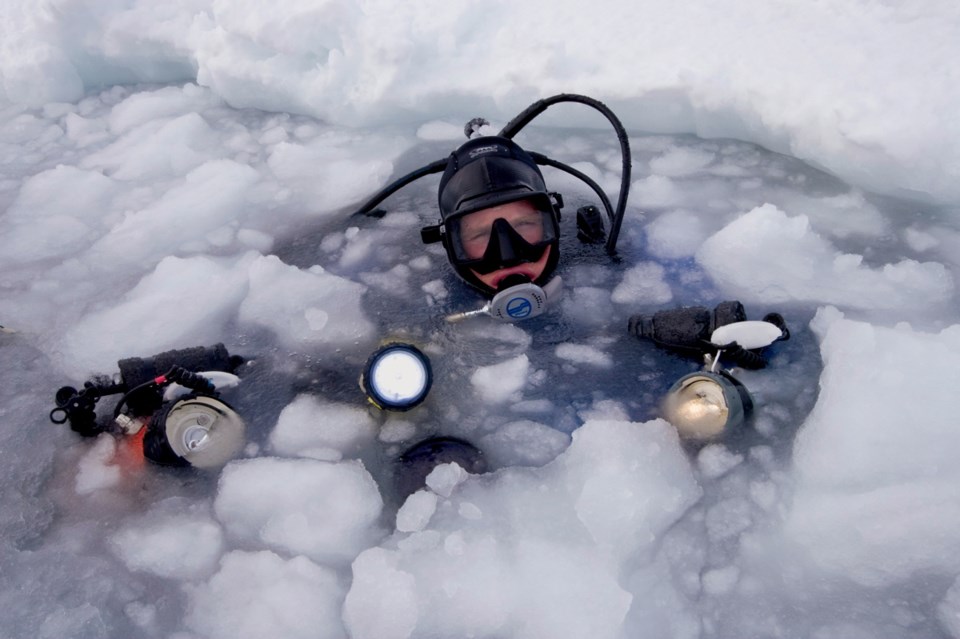A video of a stricken, starving polar bear recorded by Paul Nicklen, UVic alumnus and National Geographic nature photographer, has attracted more than five million views online.
Nicklen, who studied biology at the University of Victoria, recorded the video in late August on Somerset Island in Nunavut. It shows the bear, weak and stumbling, its skin and fur hanging slack over an obviously emaciated frame as it looks for food.
The photographer shared the video on his Facebook page on Tuesday, saying everyone there was “pushing through their tears and emotions while documenting this dying polar bear.”
On Friday, National Geographic shared a version of the video. As of 8:30 p.m., it had been viewed more than 5.1 million times.
There was some criticism, with people asking why no one tried to help the bear or feed it.
SeaLegacy, a conservation organization Nicklen works with, noted online that the bear “was on his last legs and his muscles had atrophied beyond repair. It would also have been illegal to feed him, to approach him, or to do anything to ease his pain.”
In his Facebook post, Nicklen, who lives at Nanoose, said there was no saving the bear.
“People think that we can put platforms in the ocean or we can feed the odd starving bear. The simple truth is this — if the Earth continues to warm, we will lose bears and entire polar ecosystems,” he wrote.
“This large male bear was not old, and he certainly died within hours or days of this moment. But there are solutions. We must reduce our carbon footprint, eat the right food, stop cutting down our forests, and begin putting the Earth — our home — first.”
In an interview Friday, Nicklen said he could not say for certain why the bear was so weak.
He could, however, tell it was a male, eight to 10 years old, with a big frame and no obvious signs of injury other than its generally weak condition.
“When scientists say: ‘Polar bears are going to disappear in the next 100 to 150 years,’ people think of numbers on a data sheet,” he said from New York.
“All I’m trying to say is: ‘This is what a starving bear actually looks like.’ ”
Nicklen grew up on Baffin Island, where his father worked as a mechanic. He studied biology at UVic in the 1980s and learned to scuba dive.
He worked briefly as a biologist before giving up the regular paycheque to pursue wildlife photography full time. After many years of rejection, he works for National Geographic and specializes in polar environments. He has spent many days photographing and documenting the disappearance of sea ice from the Arctic.
Nicklen is careful about drawing conclusions from his pictures, noting that many people look to poke holes in what’s being said about things like the disappearance of sea ice from the North.
He and his colleagues shot video of the bear until it noticed them and became agitated. They left out of concern it might burn up too much energy in its last days.
“It didn’t run or anything and we didn’t want to accelerate its dying process by forcing it to burn up calories,” he said. “We just wanted to get out of there.”
He can’t say for certain whether the bear died.
He said he hopes people can understand a whole ecosystem is under threat. Without sea ice, creatures such as polar bears can’t get access to ocean water and seals, their chief prey.
“Ice is melting earlier every spring and freezing later every fall,” Nicklen said.
“Bears are designed to go as much as two months without ice, but they are not designed to go four or five months without ice.
“Well, this [the video] is what it actually looks like when polar bears are stranded on land.”


